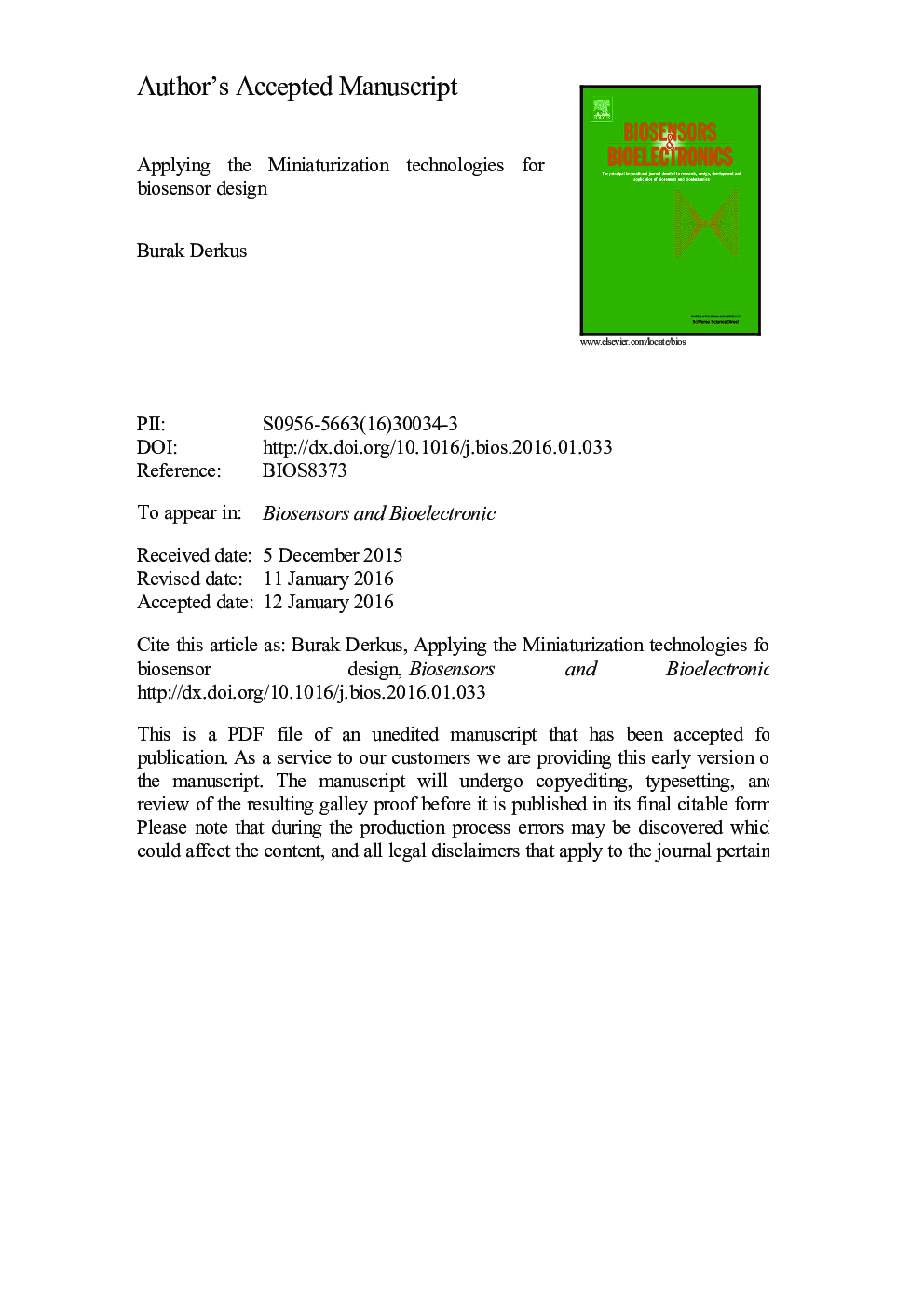| Article ID | Journal | Published Year | Pages | File Type |
|---|---|---|---|---|
| 7230767 | Biosensors and Bioelectronics | 2016 | 36 Pages |
Abstract
Microengineering technologies give us some opportunities in developing high-tech sensing systems that operate with low volumes of samples, integrates one or more laboratory functions on a single substrate, and enables automation. These millimetric sized devices can be produced for only a few dollars, which makes them promising candidates for mass-production. Besides electron beam lithography, stencil lithography, nano-imprint lithography or dip pen lithography, basic photolithography is the technique which is extensively used for the design of microengineered sensing systems. This technique has some advantages such as easy-to-manufacture, do not require expensive instrumentation, and allow creation of lower micron-sized patterns. In this review, it has been focused on three different type of microengineered sensing devices which are developed using micro/nano-patterning techniques, microfluidic technology, and microelectromechanics system based technology.
Related Topics
Physical Sciences and Engineering
Chemistry
Analytical Chemistry
Authors
Burak Derkus,
